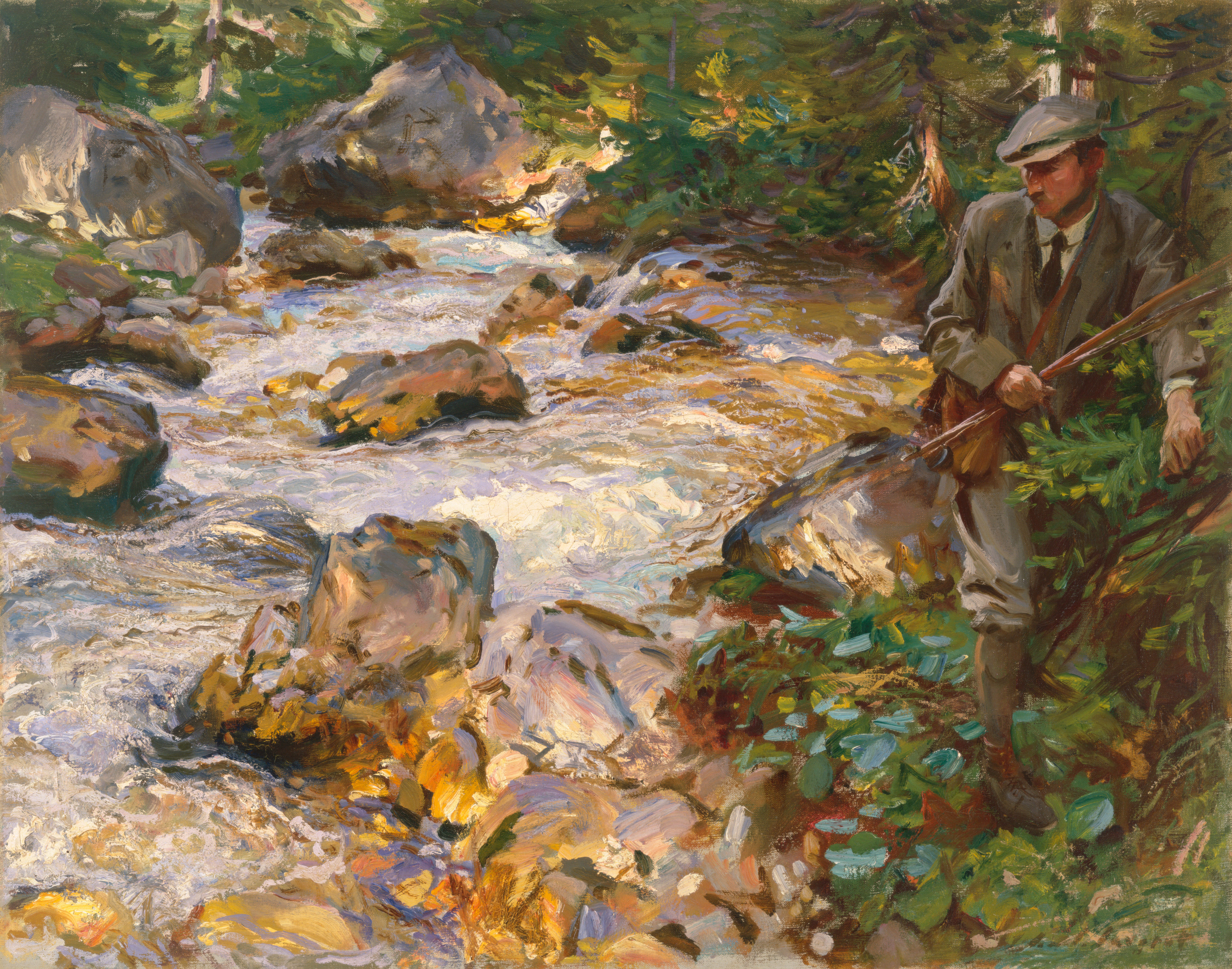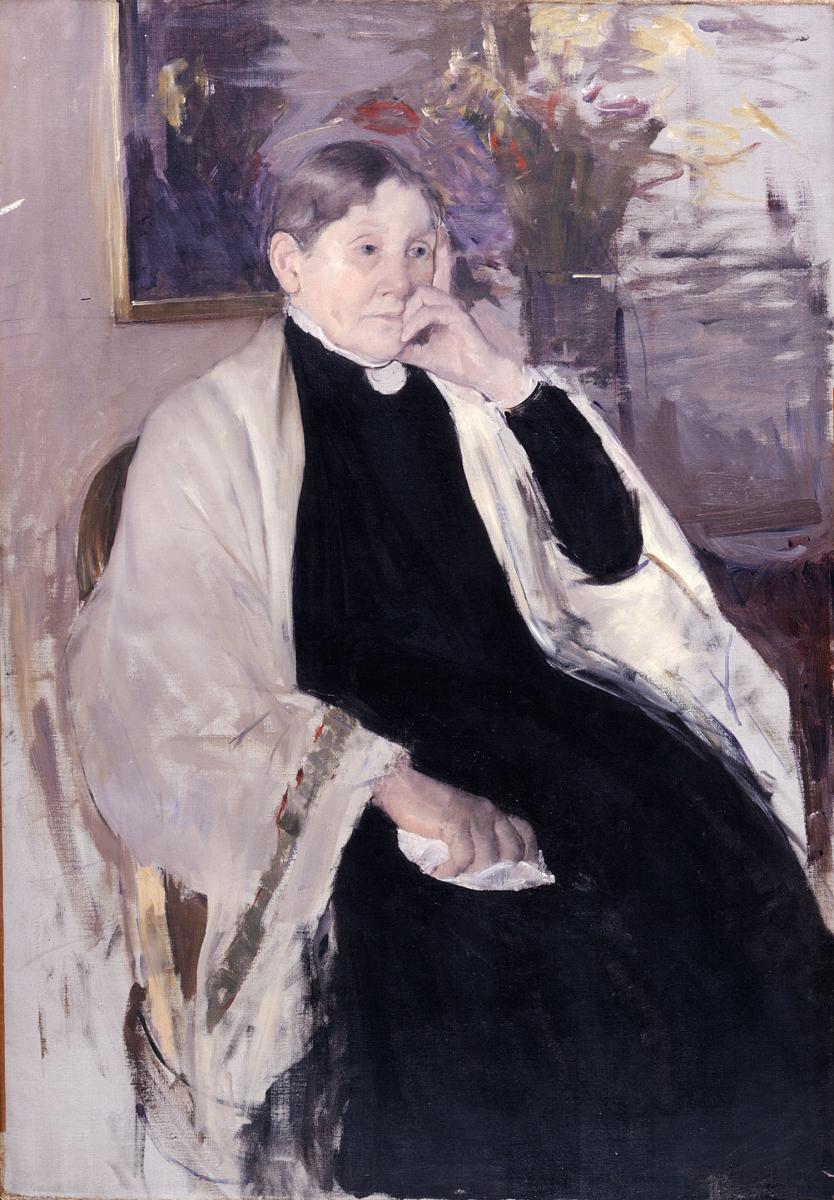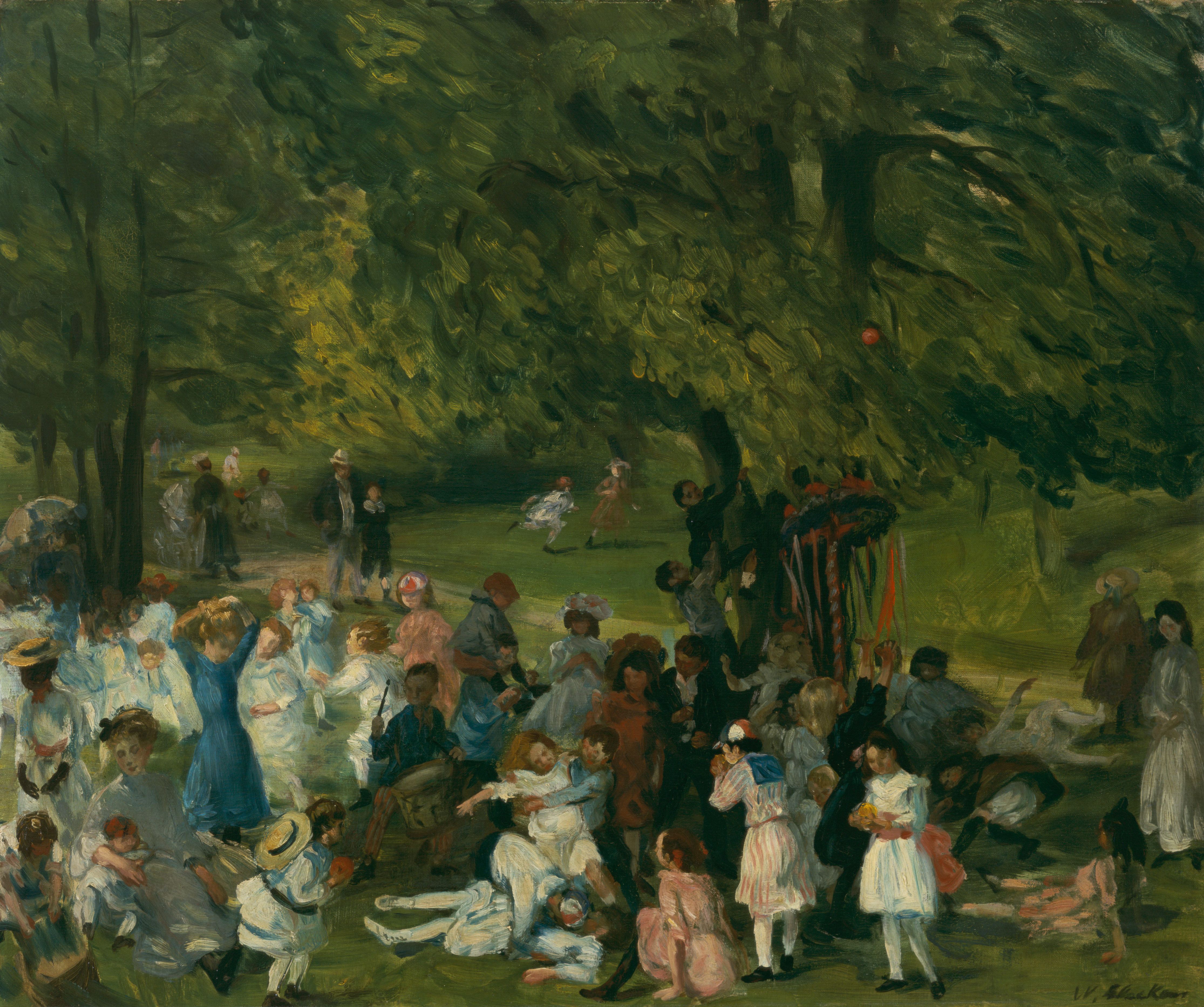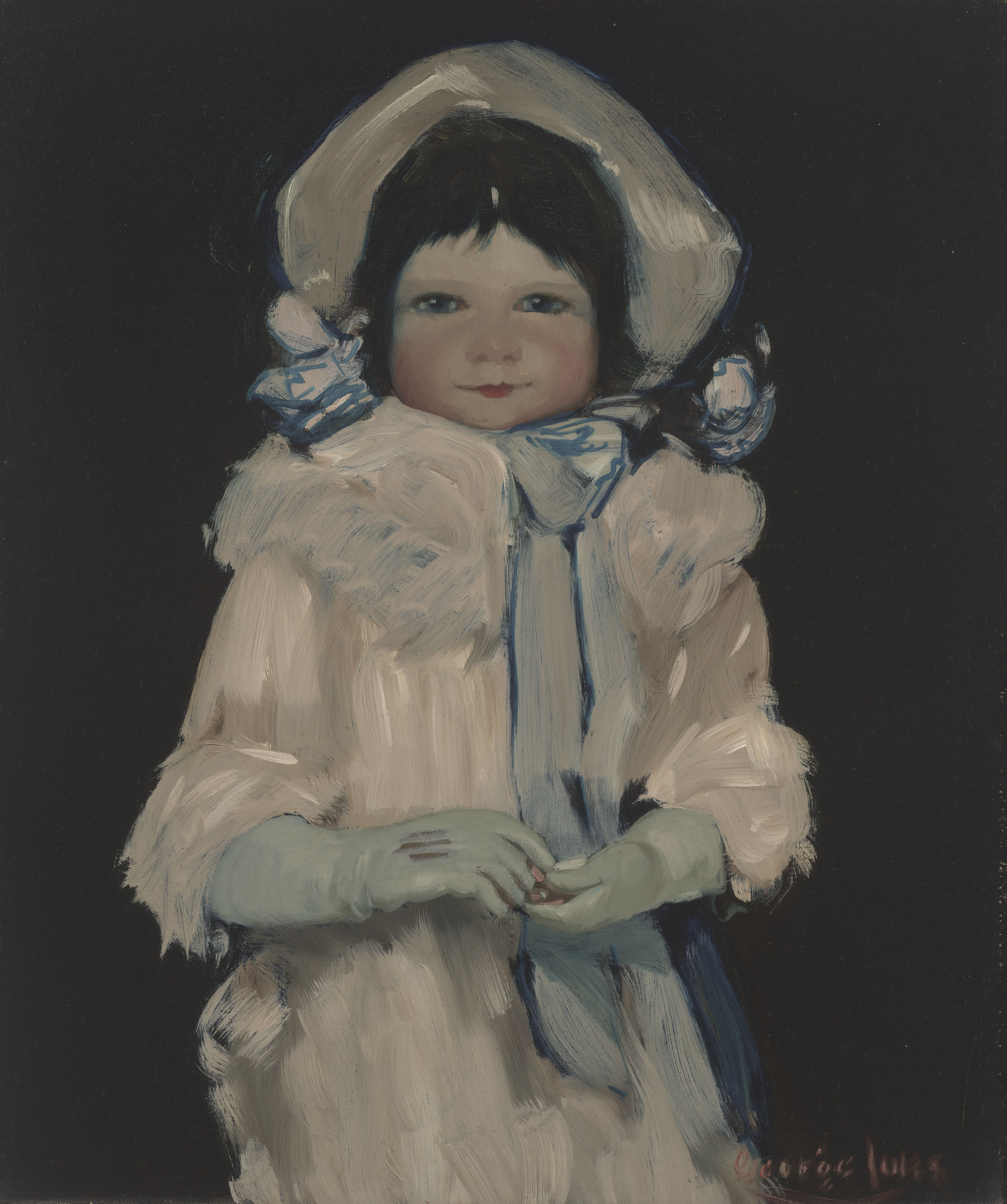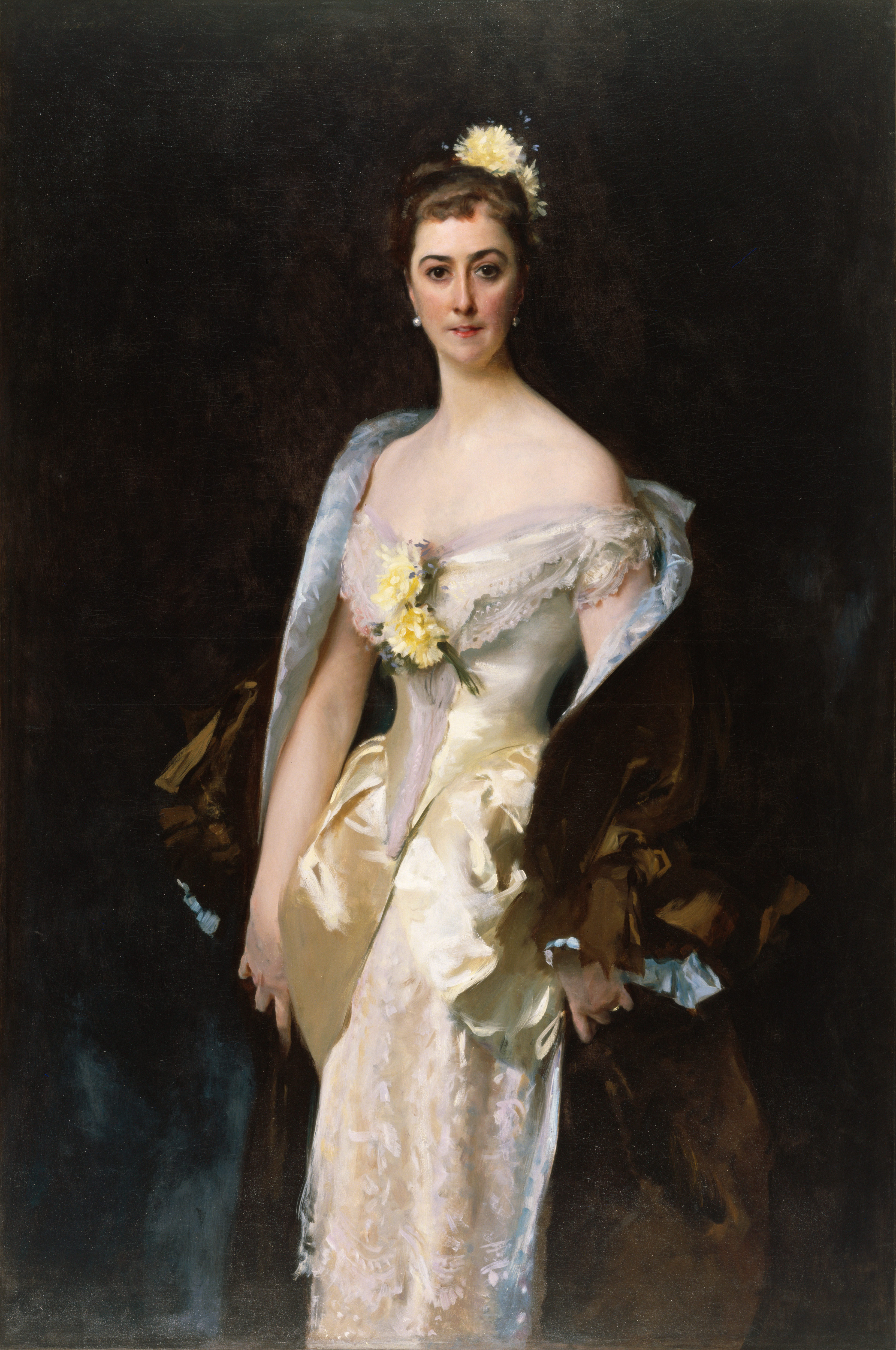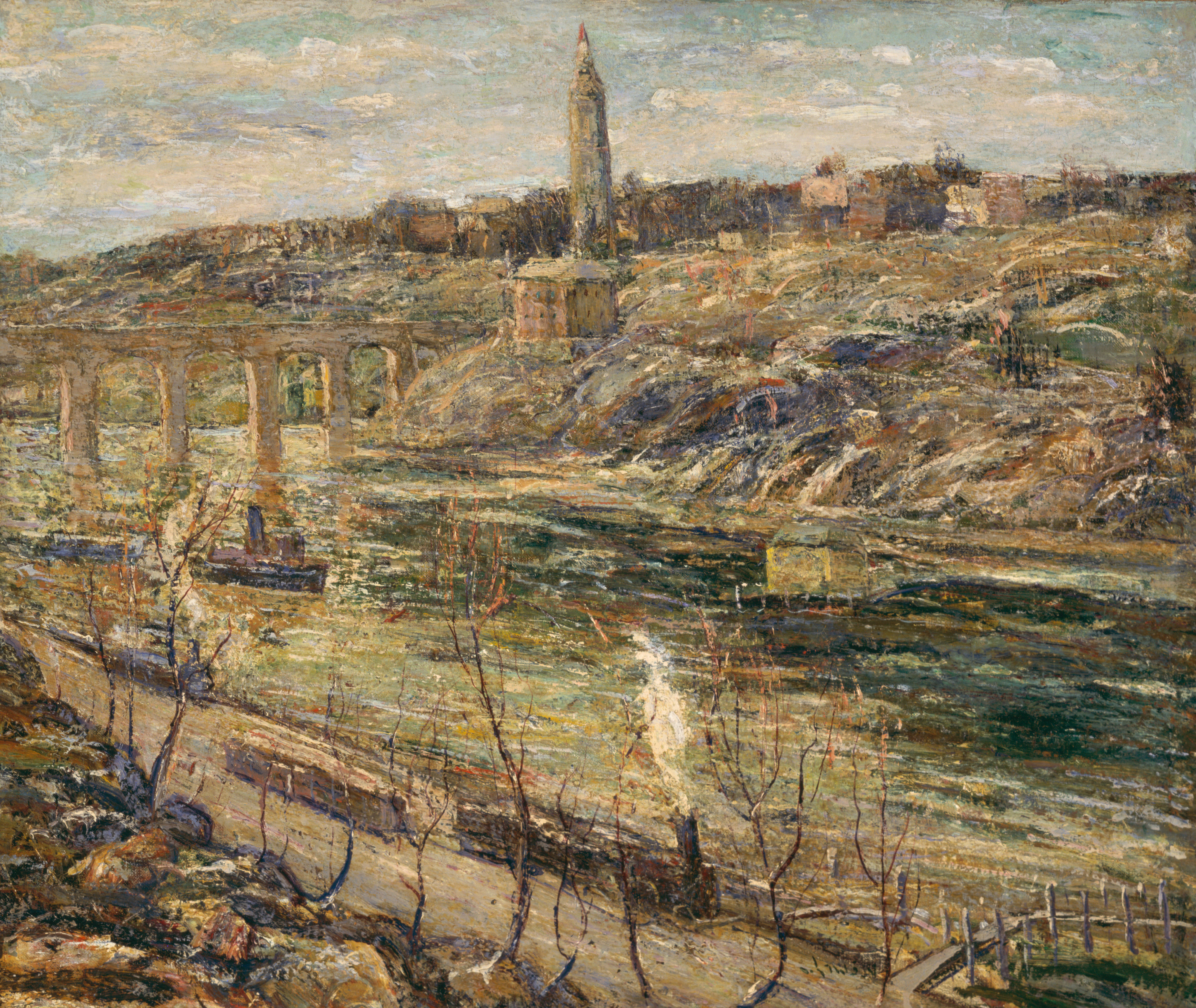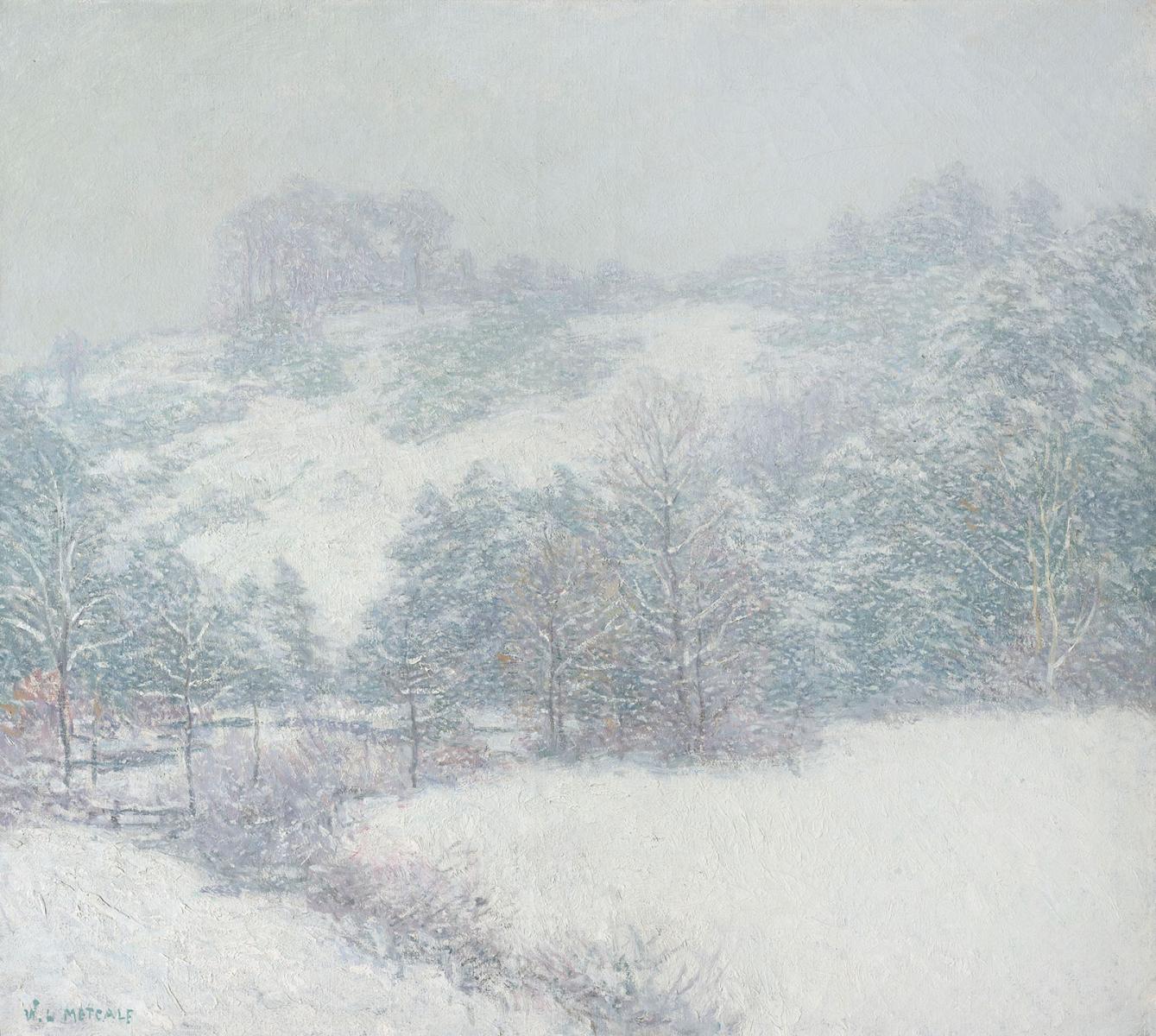Lady in Black with Spanish Scarf (O in Black with a Scarf)
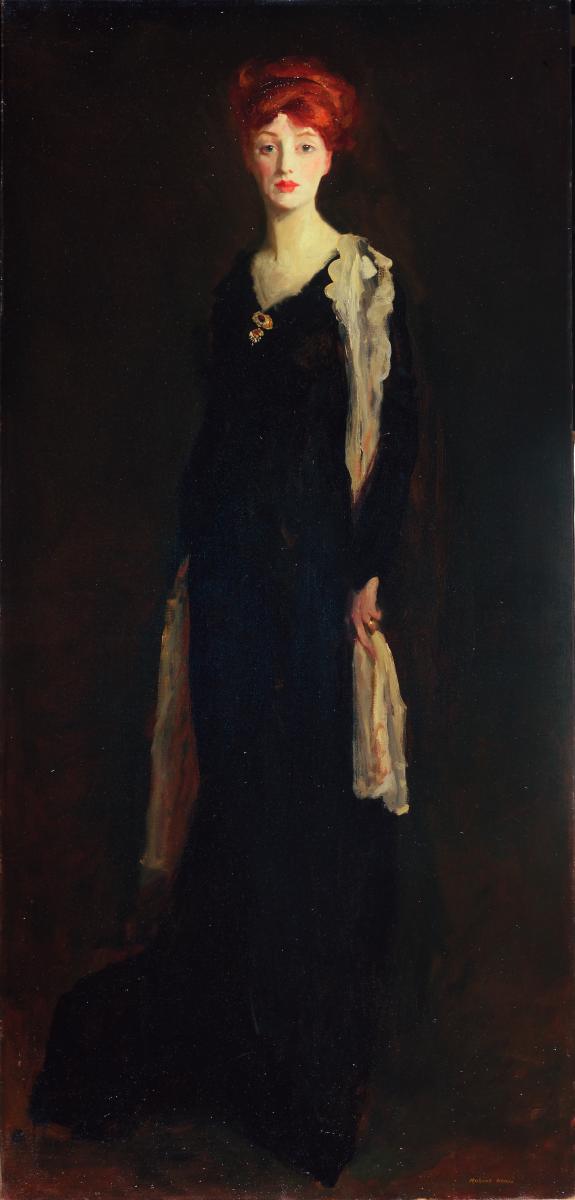
Can a portrait capture someone’s mind?
When this portrait was painted, Marjorie Organ Henri had been married to the artist for less than two years. “O,” as Henri called her, was a successful cartoonist for the New York Journal, and her caricatures appeared regularly in print. This portrait challenged the conventions of society portraiture; posing her against a dark background, the artist’s psychological realism presents her as independent, confident, and self-possessed—the very model of the period’s “New Woman.”
